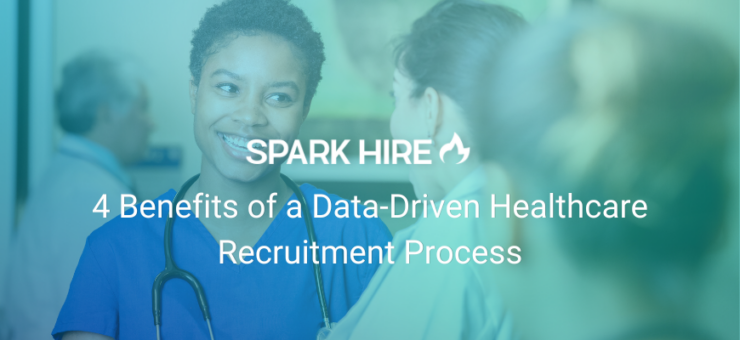As a healthcare recruiter, you prioritize attracting and retaining high-quality talent. You must make timely decisions that facilitate the hiring process and make placements that can determine the success of healthcare organizations. And with one of the highest turnover rates of any industry, healthcare organizations desperately need candidates they can count on.
That said, you need reliable data to back your decisions at every point of the recruiting process because, without the right data, you could be making decisions in the dark. Illuminate your decision-making process with accessible data analytics that can help you:
- Predict Hiring Needs
- Expand Your Sourcing Pool
- Effectively Assess and Select Talent
- Decrease Time to Hire
Before we dive into these advantages of a data-driven recruiting strategy, it’s important to note where your data should be stored for enhanced accessibility and analysis.
ATS (Applicant Tracking Systems) are widely used for candidate information retrieval. In addition, other, more comprehensive data platforms like business intelligence analytics systems can help you gain operational insights and keep track of post-hire KPIs.
Regardless of which solution you choose, you’ll need a scalable platform that integrates into your existing workflows and prioritizes broader organizational goals. That said, let’s explore the benefits of leveraging data within the healthcare hiring process.
Predict Hiring Needs
The right data analytics platform will allow you to forecast your hiring needs to prepare your schedule in advance through detailed trend analysis. For a full picture of what to expect, your team can leverage the following prediction tools:
- Historical data analysis: Analyze patterns, trends, and seasonality factors to discover the best times to source for new hires and uncover additional variables that may be affecting your hiring process.
- Workforce analytics: Understand workforce demographics, turnover rates, retirement rates, and other factors that impact your hiring pools to inform your candidate selection.
- External data integration: Compare internal and external data to understand how your organization-specific data stacks up against industry trends.
- Dashboard reporting: Monitor key hiring metrics like applicant-to-hire ratio and source effectiveness using real-time dashboards.
These predictions can help your team allocate resources effectively and make informed decisions that directly impact the quality and quantity of your candidate selection. Advanced data analytics platforms can also simulate scenarios based on predetermined criteria so that your team can play out your solutions in real time.
Expand Your Sourcing Pool
To maintain a diverse and productive candidate pool to source from, your team needs the latest sourcing data. That means that you’ll need access to multiple data sources, including:
- Referral networks: Get the most out of your candidate referrals by identifying candidates with strong existing connections and engaging them in targeted referral programs. Then, pinpoint ongoing referral trends to expand your reach.
- Advanced candidate search: Use filtering capabilities to find the exact candidate fit for open positions based on predefined skills, experience, and location criteria.
- Passive candidate identification: Find passive candidates who may be interested in future opportunities. Analyze relevant social media and professional network data to identify qualified candidates who have not applied yet.
- Source effectiveness measures: Get a full picture of which sourcing methods are working and which ones need to be improved or removed. Access insights related to hiring sources, conversion rate, and candidate qualification to decide which sourcing methods to prioritize.
Find more talent faster by utilizing an integrated data approach to your hiring process. That way, you can optimize your strategies and enhance your overall talent acquisition efforts.
Additionally, many organizations use advanced analytics to compare their strategies with market insights to understand sourcing patterns and get a full view of existing working conditions. Your team can then stay ahead of the market trends and effectively inform candidates of open positions.
Effectively Assess and Select Talent
Several factors must be considered to effectively assess healthcare talent—cost considerations, compliance requirements, retention opportunities, and more. If carefully assessed, your team can select the best talent that provides quality care for years to come.
To make informed candidate selection decisions, you’ll need to leverage data-based tools to analyze key metrics like:
- Behavioral and cultural fit: Know if a candidate will work well in a specific environment by performing behavioral-based techniques to gauge potential cultural fit based on teamwork, problem-solving, or other predefined organizational values.
- Continuous improvement: Track candidate performance to better understand post-hire outcomes and identify opportunities for improvement within your existing talent assessment strategy.
- Skills and qualifications: Analyze candidate skills and qualifications to prioritize top performers and weed out unqualified candidate traffic. You can also use this data to match and redirect talent to the right open positions.
- Comparative performance: Perform analysis across several candidate profiles to compare strengths, qualifications, and experience to effectively assess relative strengths and weaknesses and reduce bias.
With this data at your disposal, your team can build a reliable toolkit for talent assessment and selection, enabling you to streamline workflows. You can also maintain your organization’s reputation for efficiently sourcing talent that matches healthcare organizational values and provides exceptional care.
Decrease Time to Hire
To stay competitive, your team needs to decrease its time to hire as lengthy recruitment processes leave gaps for other recruiters to disrupt your plans with competitive offers.
The hiring process is also a candidate’s initial experience with an organization, meaning that creating a productive hiring process is essential for future employee retention and referral building. To retain talent and create an optimal first impression, your team should take advantage of data tools that advance:
- Collaboration and communication: Analytics tools can optimize communication among your stakeholders, so you can close loops faster and make unified decisions.
- Candidate screening: Correlate candidate attributes using historical data to quickly discover predictors for success and target the most promising candidates.
- Interview scheduling: Make the most of your time by scheduling productive interviews that target any predefined gaps in a candidate’s profile and address any individual performance-related queries.
You can speed up these processes with the help of accessible data. This means that your team can promptly fill critical positions that match organizational standards and maximize the lifetime value of your hires.
Data analytics empower you to measure and improve hiring processes. These tools can provide insight into which strategies are not working and what your team should do about them to increase the accuracy and efficiency of your hiring approach.
 Featured Guest Expert – Julie Albiani
Featured Guest Expert – Julie Albiani
Julie Albiani (she/her) is a Talent Acquisition Manager at Arcadia. Julie is passionate about helping growing businesses scale while maintaining a strong, candidate-first approach with DEI-focused initiatives. She has experience working with SaaS companies as well as staffing agencies. Before recruiting, Julie worked in the travel industry for several years. She loves being part of a mission-driven organization that focuses on helping to improve quality and access to healthcare. In her free time, Julie loves going to spin classes, hunting for antiques, and trying new restaurants. She currently resides in the Boston area with her husband and cat.











